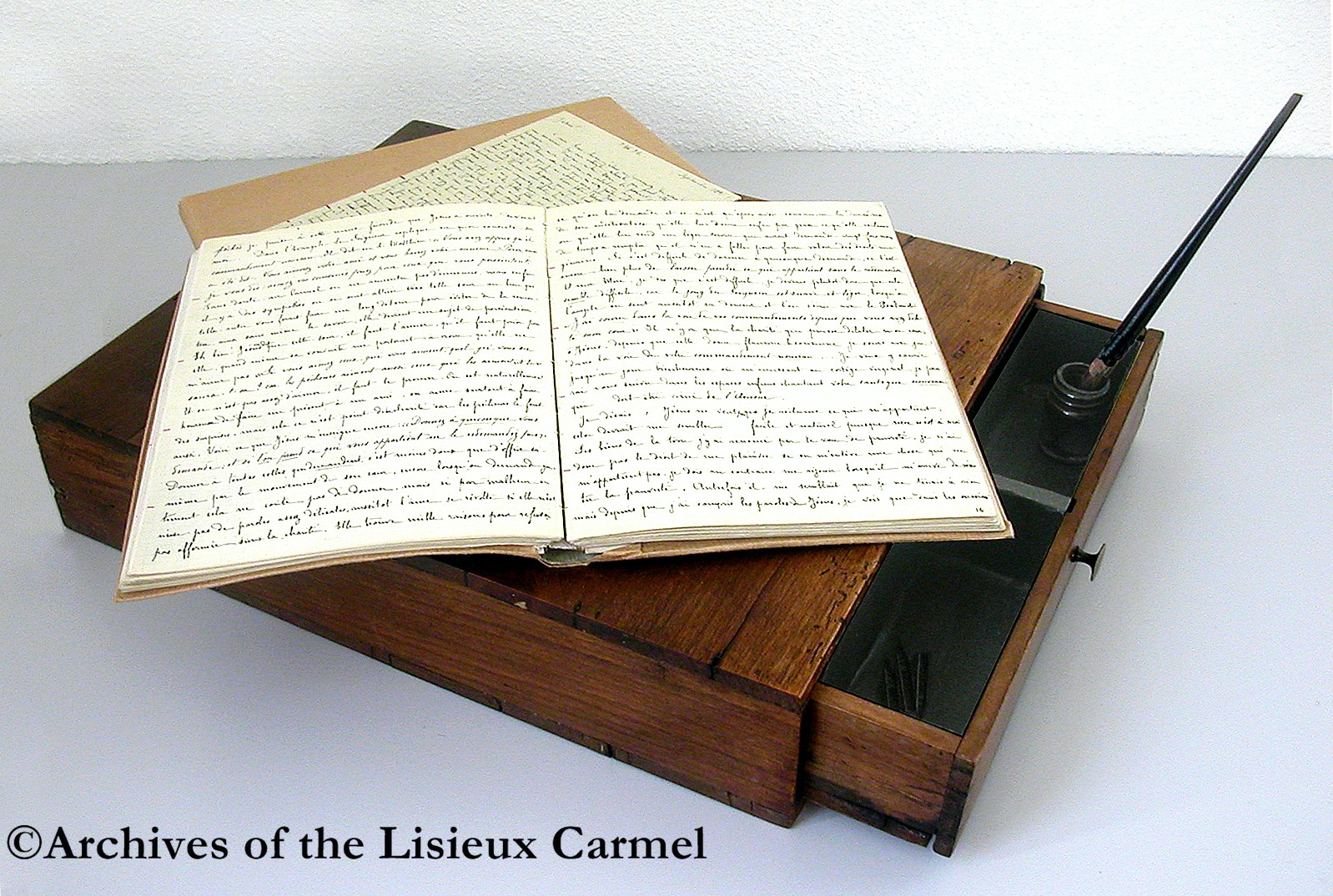Saint Therese of the Child Jesus
of the Holy Face
Entries in Celine Sister and Witness of St. Therese of the Child Jesus (1)
St. Therese's sister Celine entered the Carmel of Lisieux 120 years ago today, on September 14, 1894
 "Celine. Sister and Witness of St. Therese of the Child Jesus," by Stephane-Joseph Piat. The cover shows Celine, left, at twelve; Therese, right, at eight, 1881.
"Celine. Sister and Witness of St. Therese of the Child Jesus," by Stephane-Joseph Piat. The cover shows Celine, left, at twelve; Therese, right, at eight, 1881.
120 years ago today, on September 14, 1894, Therese's sister Celine entered the Carmel of Lisieux at the age of 25. She had taken care of her father until his death six weeks before, on July 29, 1894.
Celine's story is told in the book Celine: Sister and Witness of St. Therese of the Child Jesus by a Franciscan priest, Stephane-Joseph Piat, who knew her well in her later years. (She died on February 25, 1959, at the age of 89). She herself tells the story of the three years she spent with Therese in Lisieux Carmel in her memoir My Sister Saint Therese, first published in French in the 1950s.
Celine had lived much longer "in the world" than her sisters. From the age of seventeen she had been in charge at Les Buisonnets. She had accompanied her father during his confinement in a mental hospital; nursed him, together with Leonie, and managed his household after his release; participated in the social life of the family of her uncle Guerin; refused two proposals of marriage; considered joining the Jesuit Father Almire Pichon in an apostolate in Canada; been an active member of her parish; organized other young women in charitable and apostolic works in Lisieux; and vigorously pursued studies in art, photography, and other fields. Because she had looked after her father and managed his household, and because of her strong personality, incredible energy, and many talents, Celine's early adjustment to the Carmelite way of life, which at that time was so rigid (for a guide to all its minute customs, see the "Paper of exactions" at the Web site of the Archives of the Carmel of Lisieux) was a challenge. Like so many of us do, she often compared herself with Therese and became discouraged despite her courageous efforts.
Read her eyewitness testimony about Therese at the 1910 diocesan process in the book St. Therese of Lisieux by those who knew her at
At the Web site of the Archives of the Carmel of Lisieux, read the circular of Sister Genevieve of the Holy Face, an account of her life which was prepared at Lisieux and sent to other Carmels at Celine's death.
Read an online biography of Celine on the Web site "Martin Sisters."
September 14, 1894 was an historic date in Carmel not only because of the entrance of the young woman who would give us such valuable testimony about her sister-saint but also for several other reasons:
To make room for Celine, the cells were moved around, and it was to prepare for September 14 that Therese moved into her last cell, which she occupied from then until she left it for the infirmary on July 8, 1897
 writing-desk on which St. Therese wrote the three manuscripts of "Story of a Soul"
writing-desk on which St. Therese wrote the three manuscripts of "Story of a Soul"
When Celine entered, Therese passed on to Celine the ecritoire (small wooden writing-desk held on one's lap) that she herself had been using. Therese replaced it with another, no longer fit for use, which she had found in the attic. So it's on this last, somewhat battered writing-desk, which was displayed in the United States in the summer of 2013, that Therese wrote the three manuscripts of "Story of a Soul"
and all her letters to her spiritual brothers, the young priest Adolphe Roulland and the young seminarian Maurice Belliere.
Celine brought with her a small notebook in which she had copied out extracts from her uncle's Bible. She passed this notebook on to Therese. Since the nuns did not have Bibles, some of the passages were new to Therese. It was in this notebook that Therese found the Scripture passages that were the foundation of her "way of confidence and love": "If anyone is little, let that one come to me." "For to the one that is little, mercy will be shown." "You shall be carried on the knees and fondled at the lap."
Celine also brought that day another object that would be important to the spread of Therese's message: the photographic apparatus with which most of the photographs of Therese as a Carmelite were taken.
May Celine (Sister Genevieve of the Holy Face) obtain for us the grace to enter into following her sister's way of confidence and love with the same energy and courage with which she entered Carmel.